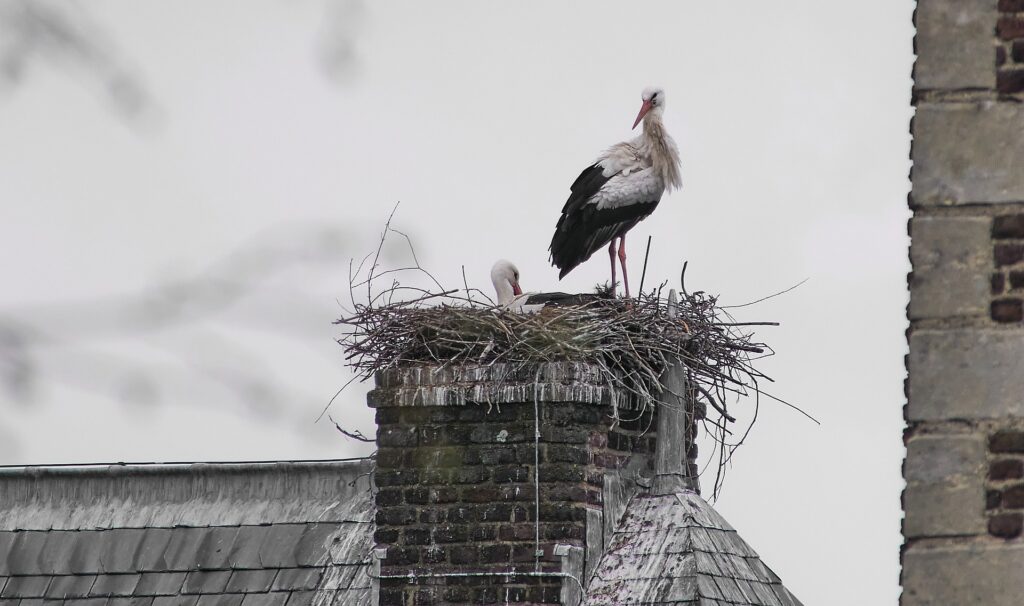Just as you’d protect your home, wildlife cherishes their nests. When they’ve inconveniently chosen your chimney for this sanctuary, it’s a tricky situation. You don’t want to harm them, but you can’t just ignore the problem either.
This article guides you on safely removing these uninvited guests while keeping their well-being in mind. Let’s explore how to identify nesting creatures, remove nests responsibly and prevent future intrusions without disturbing nature’s delicate balance.
Understanding the Importance of Safe Nest Removal
You’ve got to understand how crucial safe nest removal is, not just for the well being of your chimney, but also for protecting wildlife. It’s a delicate task requiring sensitivity and knowledge about nest relocation ethics.
You see, careless removal can disrupt bird families and negatively impact the ecosystem.
Each species plays a vital role in maintaining balance in nature. So when you tamper with their homes without considering the right procedures, you’re messing with that balance. Plus, improper handling can harm these critters.
So next time you find a nest nestled in your chimney or elsewhere on your property, don’t just yank it out. Remember the importance of safe relocation practices—it’s an ethical responsibility we share for our environment!
Identifying Nesting Wildlife in Your Chimney
It’s crucial to correctly identify the type of creature that’s taken up residence in your flue before proceeding with any sort of eviction process. Chimney Invaders Identification is an essential skill to prevent harm to wildlife and damage to your home. It may be a bird, raccoon, or squirrel that’s decided your chimney is their perfect nesting spot.
Nesting Signs Recognition can be tricky; you’ll need to pay close attention. Listen for unusual sounds or notice peculiar smells coming from the fireplace. If you’re seeing twigs, leaves, or animal droppings around the hearth, it’s likely you have an uninvited guest.
Step-by-Step Guide to Safely Removing Nests
Let’s delve into a step-by-step guide to carefully extracting unwanted guests from your flue, ensuring both their safety and yours. It’s important to consider nest relocation methods that respect wildlife protection laws.
Firstly, never attempt removal during breeding season. You risk harming young animals who aren’t ready to survive outside the nest.
Secondly, if the nest is active, call in professionals. They’re trained in safe extraction techniques and are knowledgeable about local wildlife regulations.
Lastly, after safe removal, prevent future nesting with chimney caps or screens.
Professional Services for Wildlife Nest Removal
They’re a crucial resource when dealing with unwanted inhabitants in your home’s infrastructure. Professional services for wildlife nest removal in NJ are not just about getting rid of the nuisance, it’s also about abiding by Nest Relocation Ethics and Wildlife Protection Laws.
You see, these professionals don’t simply remove nests; they do so while ensuring minimal disruption to the animals involved. They’ve got the necessary training and equipment to safely handle animals, protect themselves from potential diseases, and take measures to discourage return nesting.
Now remember this: Wildlife Protection Laws are strict, so you can’t just hire anyone claiming expertise. You need certified professionals who respect these laws and prioritize animal safety.
Always consider ethics when relocating nests because wildlife deserves our respect too!
Preventative Measures to Avoid Wildlife Nesting
While it’s essential to respect and protect animals, you’ll also want to take preventative measures that discourage them from nesting in your property to begin with. One of the most effective nest deterring techniques is installing chimney caps.
Chimney cap benefits are numerous. First, they prevent animals from descending into your chimney and establishing a home. Second, these caps also stop rainwater from entering which can cause dampness and mold growth. Thirdly, they act as spark arrestors reducing the risk of fire hazards.
So remember, prevention is always better than cure. By taking these steps, you’re not only safeguarding your home but also ensuring wildlife remains where it belongs- in the wild.
Frequently Asked Questions
Q: What Are the Legal Considerations for Removing Wildlife Nests From Your Chimney?
A: You’ve to consider legal penalties for removing wildlife nests from your chimney. Some species are protected, so you’ll need permits. Always check local laws before proceeding to avoid fines and protect wildlife.
Q: How Can I Tell if the Wildlife Has Abandoned the Nest or if They Are Still Using It?
A: To determine if wildlife’s still using the nest, observe it closely. If there’s no activity during peak times, they’ve likely abandoned it. Remember, proper nest identification and understanding wildlife behavior are crucial.
Q: What Health Risks Could Potentially Arise From Having Wildlife Nests in My Chimney?
A: Wildlife nests in your chimney can pose health risks. You’re at risk of disease transmission from airborne pathogens or parasites. Nest infestation could also lead to harmful pests invading your home, potentially causing illness.
Q: How Can I Humanely Deter Wildlife From Nesting in My Chimney in the First Place?
A: To keep your chimney critter-free, consider the benefits of chimney caps. They’re effective barriers against wildlife. Also, using animal repellents can discourage creatures from nesting. It’s easier to prevent than to remove nests later!
Q: Can Nests Cause Damage to the Structure of My Chimney?
A: Yes, nests can cause damage to your chimney’s structure. Identifying the nest type helps in assessing potential harm. Bird and animal nests can lead to blockages, causing wear that may require chimney repairs.
Read More: Duct Armor Vs. Aeroseal: Which Is Better?
Conclusion
So, you’ve just become a reluctant landlord to some feathery or furry squatters. Who knew your cozy chimney would be such prime real estate?
But don’t worry, with this guide and a touch of irony, you’re now well-equipped to handle any nest eviction.
Remember, it’s all about protecting both your home and the wildlife.
So here’s to fewer unexpected house guests – let’s leave the nesting to trees and birdhouses, shall we? Call Alpha Clean Air today at (888) 502-3828 and get consulted on nest removal services.






